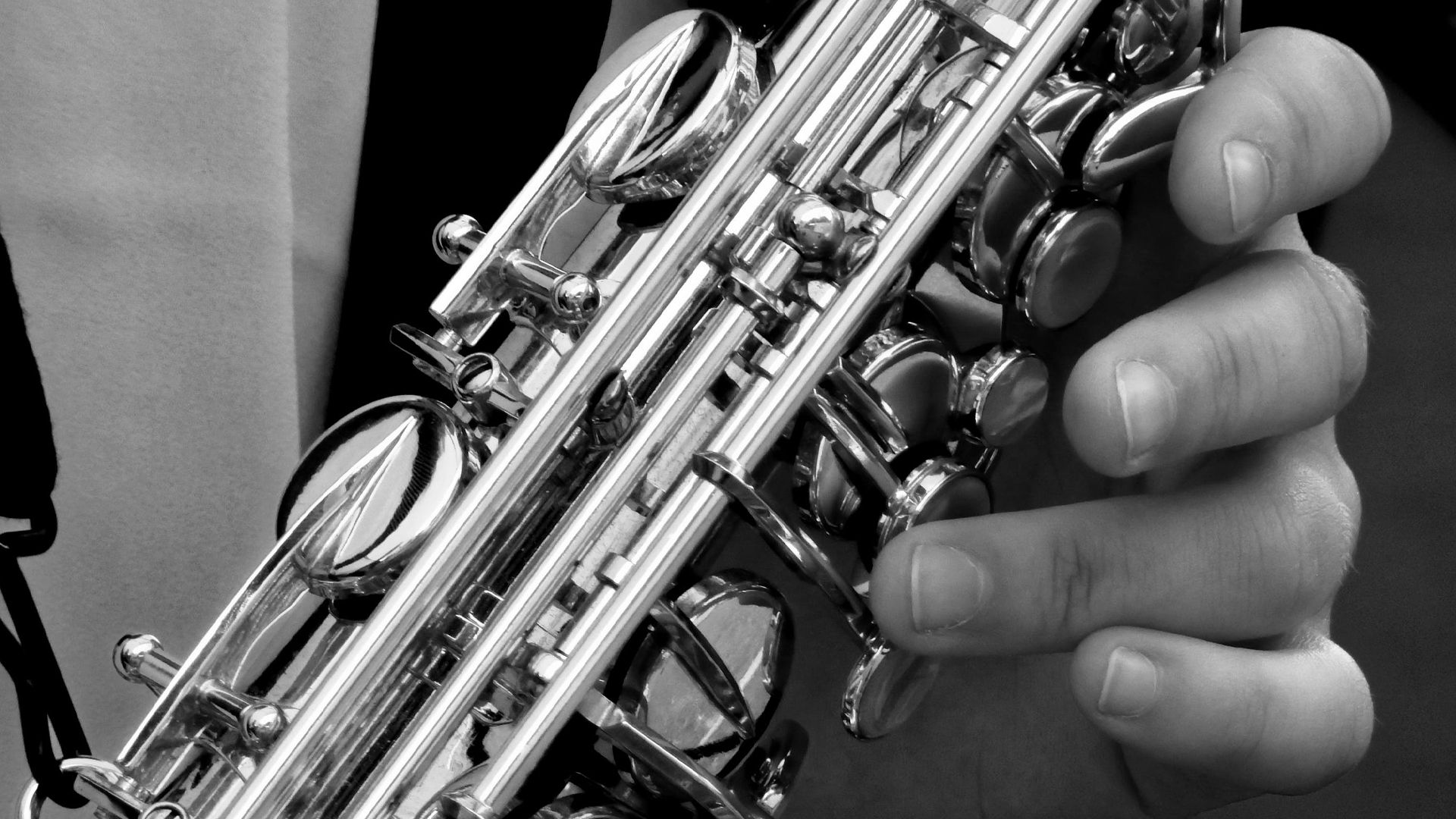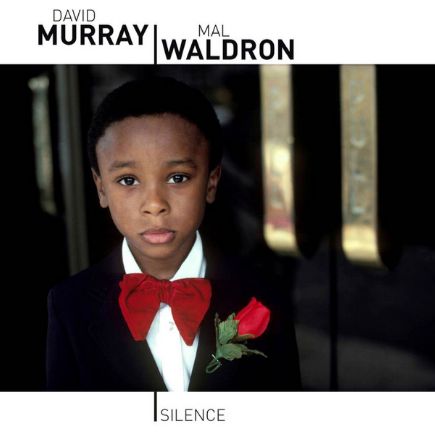David Murray, entre feu et mémoire du jazz afro-américain
Saxophoniste ténor, clarinettiste basse et compositeur, David Murray s’impose depuis les années 1970 comme l’une des voix les plus singulières et inventives du jazz contemporain. Héritier à la fois du free jazz et du post-bop, il se distingue par une approche profondément enracinée dans la culture afro-américaine, où la mémoire du blues, la ferveur du gospel et la liberté de l’improvisation cohabitent dans une tension féconde.
Né à Oakland, en Californie, Murray grandit dans un environnement musical où se côtoient jazz, rhythm and blues et musiques d’église. Très tôt, il s’imprègne du lyrisme de John Coltrane et de la puissance narrative de Sonny Rollins, tout en admirant le phrasé fluide de Paul Gonsalves. Mais c’est la découverte d’Albert Ayler et d’Ornette Coleman qui l’oriente vers une voie plus radicale: celle de la libération du son. À travers eux, il comprend que le saxophone peut devenir un instrument de proclamation, un médium de mémoire et de révolte.
Lorsqu’il s’installe à New York au milieu des années 1970, David Murray rejoint la scène du Loft Jazz, un bouillonnement artistique où se rencontrent tradition et avant-garde. Il y développe un langage personnel, capable de concilier l’énergie brute du free jazz et l’ancrage mélodique du swing. En 1977, il cofonde le World Saxophone Quartet avec Julius Hemphill, Oliver Lake et Hamiet Bluiett, formation révolutionnaire qui fusionne polyphonies collectives, improvisation libre et héritage des fanfares noires américaines. Cette aventure redéfinit la place du saxophone dans le jazz contemporain, faisant dialoguer virtuosité et puissance expressive.
Son jeu, souvent décrit comme une conversation entre rugosité et tendresse, évoque autant la ferveur d’Ayler que la chaleur d’un Ben Webster. Murray ne se contente jamais d’un discours abstrait: ses improvisations racontent, protestent, célèbrent. Dans son octet formé à la fin des années 1970, il poursuit cette exploration collective avec des musiciens comme Henry Threadgill ou Butch Morris, donnant naissance à une série d’enregistrements remarquables, dont Hope Scope (1987), considéré comme son chef-d’œuvre.
Sa discographie, riche de plus de 150 albums, témoigne d’une curiosité sans frontières. Les années 1980 voient éclore des œuvres marquantes comme Ming (1980) et Home (1981), où se mêlent hard bop, avant-garde et influences africaines. Dans les décennies suivantes, David Murray multiplie les collaborations et dialogue avec des figures du gospel, du funk, du jazz classique, mais aussi avec des artistes africains et caribéens. Ses projets avec le pianiste cubain Omar Sosa ou le Gwo-Ka Masters de Guadeloupe illustrent sa volonté d’inscrire le jazz dans une perspective diasporique, reliant les continents par le rythme et l’improvisation.
David Murray, entre fuego y memoria del jazz afroamericano
Saxofonista tenor, clarinetista bajo y compositor, David Murray se impone desde los años setenta como una de las voces más singulares e inventivas del jazz contemporáneo. Heredero a la vez del free jazz y del post-bop, se distingue por un enfoque profundamente arraigado en la cultura afroamericana, donde la memoria del blues, el fervor del góspel y la libertad de la improvisación conviven en una tensión fecunda.
Nacido en Oakland, California, Murray creció en un entorno musical donde coexistían el jazz, el rhythm and blues y las músicas de iglesia. Desde muy joven se impregnó del lirismo de John Coltrane y de la fuerza narrativa de Sonny Rollins, mientras admiraba el fraseo fluido de Paul Gonsalves. Pero fue el descubrimiento de Albert Ayler y Ornette Coleman lo que lo orientó hacia un camino más radical: el de la liberación del sonido. A través de ellos comprendió que el saxofón podía convertirse en un instrumento de proclamación, un medio de memoria y de rebelión.
Al instalarse en Nueva York a mediados de los años setenta, David Murray se integró en la escena del Loft Jazz, un hervidero artístico donde se encontraban tradición y vanguardia. Allí desarrolló un lenguaje personal, capaz de conciliar la energía bruta del free jazz con el anclaje melódico del swing. En 1977 cofundó el World Saxophone Quartet junto a Julius Hemphill, Oliver Lake y Hamiet Bluiett, una formación revolucionaria que fusionaba polifonías colectivas, improvisación libre y la herencia de las fanfarrias negras estadounidenses. Esta aventura redefinió el lugar del saxofón en el jazz contemporáneo, haciendo dialogar virtuosismo y poder expresivo.
Su estilo, a menudo descrito como una conversación entre aspereza y ternura, evoca tanto el fervor de Ayler como la calidez de Ben Webster. Murray nunca se conforma con un discurso abstracto: sus improvisaciones narran, protestan y celebran. En su octeto, formado a finales de los años setenta, prosiguió esta exploración colectiva con músicos como Henry Threadgill o Butch Morris, dando lugar a una serie de grabaciones notables, entre ellas Hope Scope (1987), considerada su obra maestra.
Su discografía, con más de 150 álbumes, testimonia una curiosidad sin fronteras. Los años ochenta vieron florecer obras destacadas como Ming (1980) y Home (1981), donde se entrelazan hard bop, vanguardia e influencias africanas. En las décadas siguientes, David Murray multiplicó las colaboraciones y dialogó con figuras del góspel, del funk y del jazz clásico, así como con artistas africanos y caribeños. Sus proyectos con el pianista cubano Omar Sosa o con el Gwo-Ka Masters de Guadalupe ilustran su voluntad de inscribir el jazz en una perspectiva diaspórica, uniendo continentes a través del ritmo y la improvisación.
David Murray, tra fuoco e memoria del jazz afroamericano
Sassofonista tenore, clarinettista basso e compositore, David Murray si impone dagli anni Settanta come una delle voci più singolari e inventive del jazz contemporaneo. Erede al tempo stesso del free jazz e del post-bop, si distingue per un approccio profondamente radicato nella cultura afroamericana, dove la memoria del blues, l’ardore del gospel e la libertà dell’improvvisazione convivono in una tensione feconda.
Nato a Oakland, in California, Murray cresce in un ambiente musicale in cui si intrecciano jazz, rhythm and blues e musica religiosa. Fin da giovane assorbe il lirismo di John Coltrane e la forza narrativa di Sonny Rollins, ammirando al contempo la fluidità del fraseggio di Paul Gonsalves. Ma è la scoperta di Albert Ayler e Ornette Coleman a indirizzarlo verso una via più radicale: quella della liberazione del suono. Attraverso di loro comprende che il sassofono può diventare uno strumento di proclamazione, un mezzo di memoria e di ribellione.
Stabilitosi a New York a metà degli anni Settanta, David Murray entra nella scena del Loft Jazz, un fervente crocevia artistico dove tradizione e avanguardia si incontrano. Qui sviluppa un linguaggio personale, capace di conciliare l’energia grezza del free jazz con il radicamento melodico dello swing. Nel 1977 fonda insieme a Julius Hemphill, Oliver Lake e Hamiet Bluiett il World Saxophone Quartet, una formazione rivoluzionaria che unisce polifonie collettive, improvvisazione libera ed eredità delle fanfare afroamericane. Questa avventura ridefinisce il ruolo del sassofono nel jazz contemporaneo, mettendo in dialogo virtuosismo e potenza espressiva.
Il suo stile, spesso descritto come un dialogo tra ruvidità e tenerezza, richiama tanto il fervore di Ayler quanto il calore di Ben Webster. Murray non si accontenta mai di un discorso astratto: le sue improvvisazioni raccontano, protestano, celebrano. Con il suo ottetto, formato alla fine degli anni Settanta, prosegue questa esplorazione collettiva accanto a musicisti come Henry Threadgill o Butch Morris, dando vita a una serie di registrazioni notevoli, tra cui Hope Scope (1987), considerato il suo capolavoro.
La sua discografia, che conta oltre 150 album, testimonia una curiosità senza confini. Gli anni Ottanta vedono nascere opere importanti come Ming (1980) e Home (1981), in cui si intrecciano hard bop, avanguardia e influenze africane. Nei decenni successivi, David Murray moltiplica le collaborazioni e dialoga con figure del gospel, del funk e del jazz classico, oltre che con artisti africani e caraibici. I suoi progetti con il pianista cubano Omar Sosa o con i Gwo-Ka Masters di Guadalupa illustrano la sua volontà di collocare il jazz in una prospettiva diasporica, unendo i continenti attraverso il ritmo e l’improvvisazione.
David Murray, between fire and memory in Afro-American jazz
Tenor saxophonist, bass clarinetist, and composer, David Murray has stood out since the 1970s as one of the most distinctive and inventive voices in contemporary jazz. Heir to both free jazz and post-bop, he distinguishes himself through an approach deeply rooted in African American culture, where the memory of the blues, the fervor of gospel, and the freedom of improvisation coexist in fertile tension.
Born in Oakland, California, Murray grew up in a musical environment where jazz, rhythm and blues, and church music blended naturally. From an early age, he absorbed the lyricism of John Coltrane and the narrative power of Sonny Rollins, while admiring the fluid phrasing of Paul Gonsalves. But it was the discovery of Albert Ayler and Ornette Coleman that guided him toward a more radical path — that of sound liberation. Through them, he realized that the saxophone could become an instrument of proclamation, a medium of memory and rebellion.
When he moved to New York in the mid-1970s, David Murray joined the Loft Jazz scene, a vibrant artistic movement where tradition and avant-garde met. There he developed a personal language capable of reconciling the raw energy of free jazz with the melodic grounding of swing. In 1977, he co-founded the World Saxophone Quartet with Julius Hemphill, Oliver Lake, and Hamiet Bluiett — a groundbreaking ensemble that fused collective polyphony, free improvisation, and the legacy of African American brass bands. This venture redefined the role of the saxophone in contemporary jazz, balancing virtuosity with expressive power.
His playing, often described as a dialogue between roughness and tenderness, evokes both Ayler’s fervor and Ben Webster’s warmth. Murray never settles for abstraction; his improvisations tell stories, protest, and celebrate. In his octet, formed in the late 1970s, he continued this collective exploration with musicians such as Henry Threadgill and Butch Morris, producing a series of remarkable recordings, including Hope Scope (1987), regarded as his masterpiece.
His discography, comprising over 150 albums, reflects an unbounded curiosity. The 1980s saw the emergence of landmark works such as Ming (1980) and Home (1981), where hard bop, avant-garde, and African influences intertwine. In the decades that followed, David Murray multiplied his collaborations, engaging with figures from gospel, funk, and classical jazz, as well as African and Caribbean artists. His projects with Cuban pianist Omar Sosa and the Gwo-Ka Masters of Guadeloupe illustrate his desire to place jazz within a diasporic framework — connecting continents through rhythm and improvisation.


